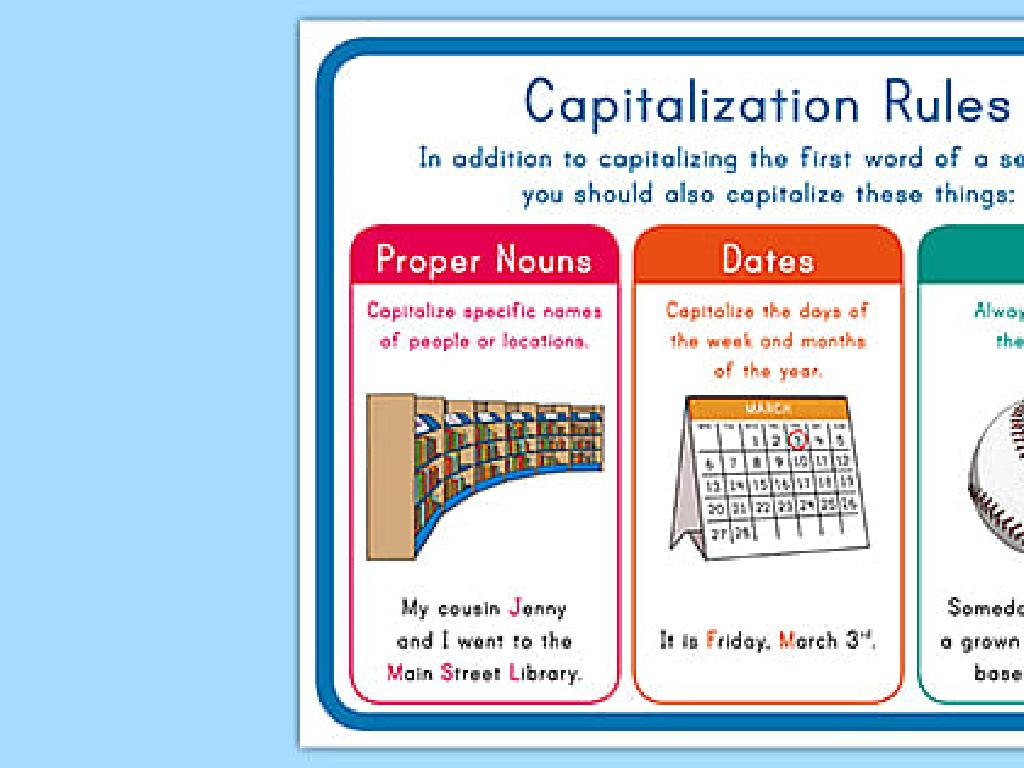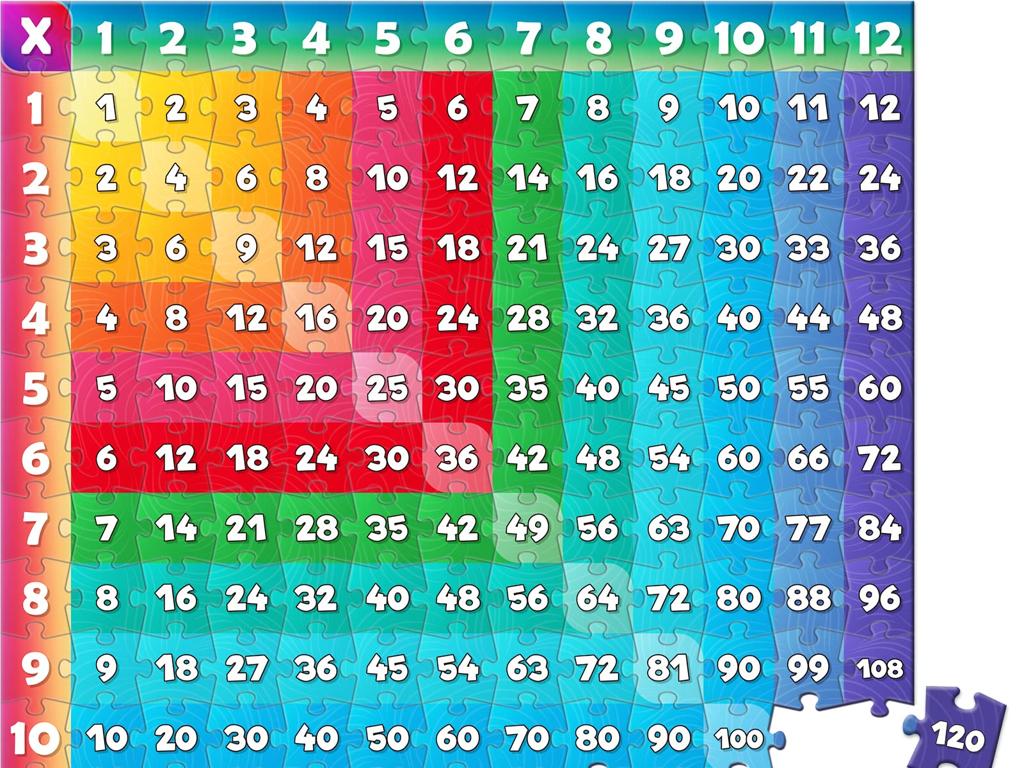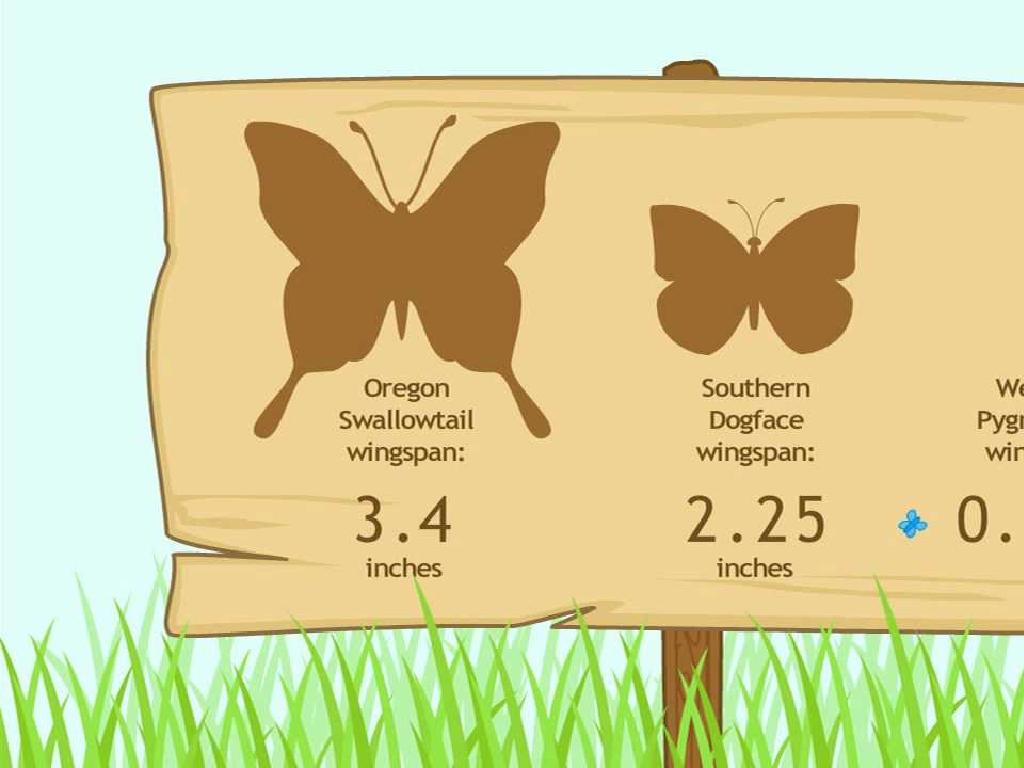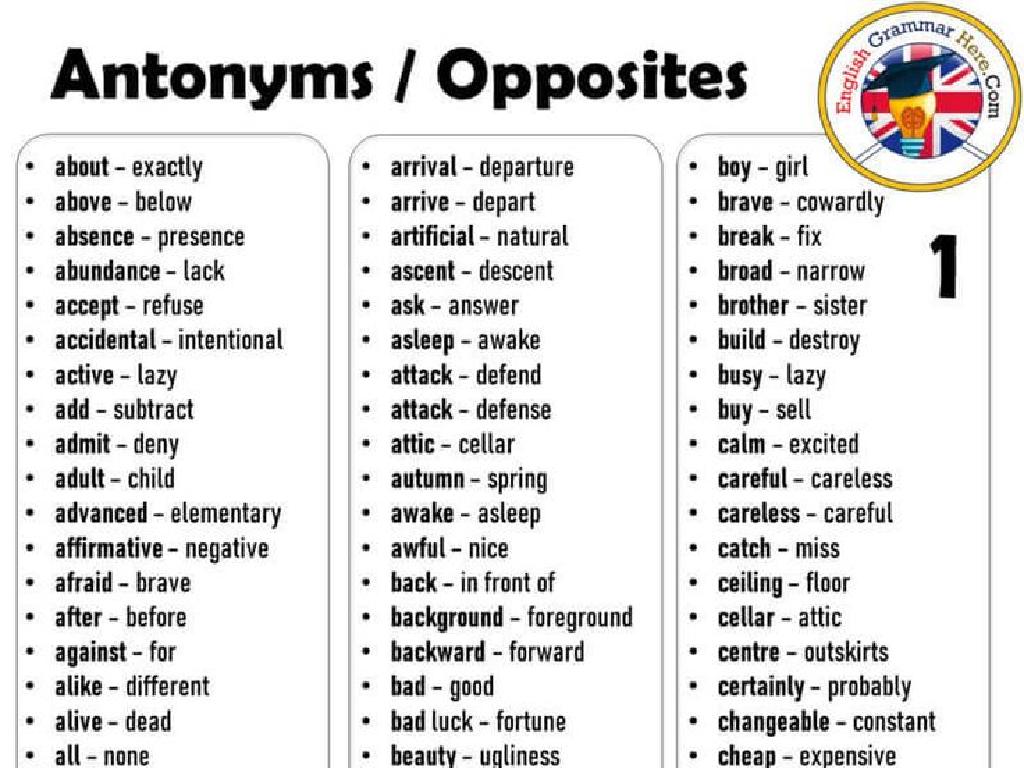Identify Vague Pronoun References
Subject: Language arts
Grade: Eighth grade
Topic: Pronouns And Antecedents
Please LOG IN to download the presentation. Access is available to registered users only.
View More Content
Pronouns and Antecedents: Clarity in Language
– Relationship of pronouns and antecedents
– Pronouns replace nouns; antecedents are the nouns they refer to.
– Importance of correct pronoun use
– Clear pronoun use avoids confusion and improves understanding.
– Effects of vague pronoun references
– Vague references can lead to misunderstandings in text.
– Strategies to avoid ambiguity
– Use specific names or rephrase sentences to clarify.
|
This slide introduces the concept of pronouns and their antecedents, emphasizing the importance of using pronouns correctly to maintain clarity in communication. Discuss the relationship between pronouns and antecedents, ensuring students understand that a pronoun takes the place of a noun, called the antecedent. Highlight why precision in language is crucial, particularly in written communication, where vague pronoun references can cause confusion. Provide examples of sentences with unclear pronoun usage and demonstrate how to revise them for clarity. Encourage students to always consider their antecedents when using pronouns and to re-read their sentences to ensure the meaning is clear.
Understanding Pronouns
– Define a pronoun
– A word that substitutes for a noun or noun phrase.
– Examples: he, she, it, they
– ‘He’ for boys, ‘she’ for girls, ‘it’ for objects, ‘they’ for groups.
– Pronouns replace nouns
– Instead of repeating ‘the dog’, say ‘it’ to avoid redundancy.
– Significance in sentences
– Pronouns help avoid repetition and make sentences clearer.
|
This slide introduces the concept of pronouns, which are fundamental in English grammar. Pronouns are used in place of nouns to avoid repetition and make sentences more concise. Examples include ‘he’, ‘she’, ‘it’, and ‘they’. It’s important for students to recognize pronouns in a sentence and understand their function. Emphasize the importance of using the correct pronoun to match the noun it’s replacing in both number (singular or plural) and gender. Provide additional examples and encourage students to create sentences using pronouns to replace given nouns.
Understanding Antecedents in Pronouns
– Define an antecedent
– An antecedent is the noun a pronoun refers to in a sentence.
– Antecedents replace nouns
– It’s the original noun that the pronoun is substituting.
– Examples: pronouns & antecedents
– ‘Lisa found her jacket.’ – ‘her’ refers to ‘Lisa’.
– Importance of clear antecedents
– Vague antecedents can confuse readers about what or whom you’re referring to.
|
This slide introduces the concept of antecedents, which are essential for understanding pronoun usage. An antecedent is the word that a pronoun refers to or replaces in a sentence. It’s important to ensure that the antecedent is clear to avoid confusion in writing. Provide examples where pronouns clearly match their antecedents and contrast with examples where the antecedent is vague or ambiguous. Encourage students to always check their writing for clarity in pronoun-antecedent relationships. This foundational knowledge will help them in identifying vague pronoun references and improving their writing skills.
Clarifying Vague Pronoun References
– What causes vague pronoun references?
– Ambiguity arises when it’s unclear which noun the pronoun is replacing.
– Examples of vague references
– ‘When Jane and Sarah are late, she gets in trouble.’ Who is ‘she’ referring to?
– Significance of clear pronoun-antecedent
– Clear relationships prevent confusion and misinterpretation in writing.
– Strategies to avoid vagueness
– Use nouns instead of pronouns when needed, or restructure the sentence.
|
This slide aims to help students identify and correct vague pronoun references to improve clarity in their writing. A vague pronoun reference occurs when it’s not clear which noun the pronoun is referring to, which can lead to confusion. By providing examples, students can see common pitfalls and understand the importance of having a clear antecedent for every pronoun. Discuss strategies to avoid vague references, such as repeating the noun or restructuring the sentence. Encourage students to analyze sentences and rewrite them for clarity. This will enhance their writing skills and their ability to communicate more effectively.
Clarifying Vague Pronoun References
– Strategies to spot vague pronouns
– Look for pronouns without clear antecedents
– How to revise unclear pronouns
– Rewrite sentences for clarity
– Practice with example sentences
– Identify pronouns and determine if they clearly refer to a noun
– Correcting vague references
– Use the strategies to fix ambiguous pronoun use
|
This slide aims to equip students with the skills to identify and correct vague pronoun references, which can cause confusion in writing. Start by explaining that a pronoun should clearly refer to a specific noun, called an antecedent. Teach students to ask themselves ‘Who or what is this pronoun referring to?’ If it’s not clear, the pronoun is vague. Show how to revise such sentences by either replacing the pronoun with the noun or by restructuring the sentence. Provide practice sentences for students to work on, and then review the corrections as a class. Encourage students to explain their reasoning for a deeper understanding.
Let’s Practice Together: Clarifying Pronouns
– Interactive exercise on vague pronouns
– We’ll work with sentences that have unclear pronoun references.
– Pair up to identify and correct errors
– Find pronouns that don’t clearly refer to a noun and fix them.
– Review and discuss corrections
– Share your pairs’ revisions and learn from others.
– Understand the importance of clarity
– Grasp why clear pronoun use is crucial in writing.
|
This slide is for an interactive class activity focused on identifying and correcting vague pronoun references. Students will be paired up to work on sentences with unclear pronouns, fostering collaboration and peer learning. After the exercise, we’ll discuss the corrections as a class to reinforce the learning objectives and ensure that all students understand why pronoun clarity is essential for effective communication. Provide guidance on how to identify vague pronouns and encourage students to explain their thought process during the discussion. This activity will help students recognize the importance of clear antecedent-pronoun relationships in their writing.
Class Activity: Crafting Clear Pronouns
– Create sentences with clear pronoun-antecedent relationships
– Exchange sentences with a partner for review
– Discuss the clarity of the sentences
– Does the pronoun clearly refer to a specific noun?
– Share standout examples with the class
– Highlight well-constructed sentences as models for the class
|
This activity is designed to reinforce the concept of pronoun-antecedent agreement and clarity in writing. Students will apply their understanding by creating their own sentences, ensuring that each pronoun used refers back to a clear and specific antecedent. After writing, students will partner up to review each other’s sentences, providing peer feedback on the clarity of the pronoun references. This peer review process encourages collaborative learning and critical thinking. Conclude the activity by sharing some of the best examples, which will serve as positive reinforcement and provide clear models for the rest of the class. As a teacher, be prepared to guide students who may struggle and provide additional examples if necessary. The goal is for students to leave the class with a solid understanding of how to use pronouns effectively to avoid ambiguity in their writing.
Wrapping Up: Vague Pronoun References
– Recap on vague pronoun references
– Review the key points about avoiding vague pronouns for clarity.
– Why clear communication matters
– Homework: Pronoun clarity worksheet
– Complete the worksheet to identify and fix unclear pronouns.
– Practice makes perfect
– Consistent practice will help solidify your understanding.
|
As we conclude today’s lesson, it’s crucial to emphasize the importance of clear communication, especially when using pronouns. Vague pronoun references can lead to confusion and misunderstandings. The homework assignment is a worksheet that will provide students with practical exercises to identify and correct sentences with vague pronoun references. This will reinforce the day’s lesson and improve their writing skills. Encourage students to approach the worksheet with the understanding that mastering the use of clear pronouns is key to effective communication. Remind them that practice is essential, and these exercises are designed to help them recognize and resolve ambiguity in their writing.






